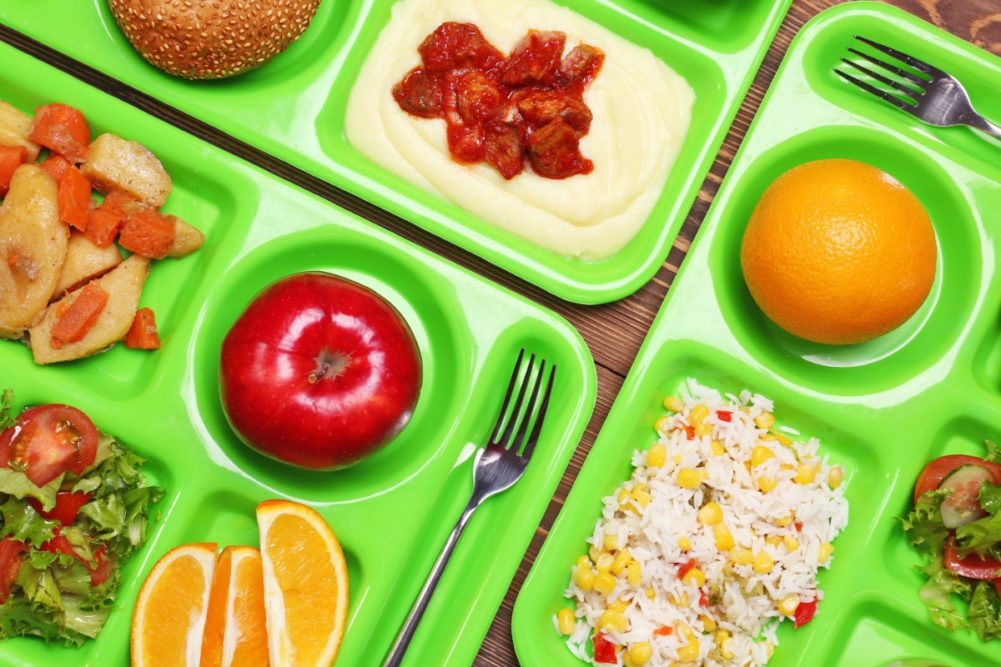KANSAS CITY — Uncertainty about schools reopening, including delays, study from home and other changes, has added yet another layer of uncertainty for the food industry amid the coronavirus (COVID-19) pandemic. Most school districts still are developing plans about how to conduct classes at a time when classes would be resuming in mid-August. The increase in COVID-19 cases in recent weeks has added to that uncertainty and in some cases nixed earlier plans. The fact there is no unified plan – some states are giving directives while school districts are developing their own plans – further clouds the issue.
One online publication called the school situation “a hodgepodge of announced strategies,” noting many were “going back to the drawing board” as the number of COVID-19 cases in some states surge.
Schools served more than 4.8 billion lunches in fiscal year 2018, including about 100,000 schools and institutions and nearly 30 million students daily, including more than 20 million free lunches, according to the US Department of Agriculture’s National School Lunch Program. Federal spending on the school lunch program totaled about $14 billion, including $1.24 billion in commodity costs. The school breakfast program, serving 90,000 schools and nearly 15 million students daily, used about $4.4 billion in federal funds with no commodity entitlement. The USDA reimburses schools for meals.
Typically, elementary, secondary and colleges in many areas begin to resume classes around mid-August, with a number waiting until after Labor Day. This year it appears most will not even try to reopen until after Labor Day, and many may open with at-home study for several weeks or provide students with the option of going to classes or studying from home. As a result, needs for school feeding programs, which include breakfasts, lunches and after-school snacks in many cases, have changed dramatically and at a minimum still are evolving.
The impact will be widespread as it encompasses nearly the full spectrum of food products, especially dairy, produce, grains (bread), eggs and others.
One Midwest egg processor said many plants that typically are making products for schools and universities at this time of year were not doing so amid the uncertainty because “the orders were just not out there.”
“Unless your product can be frozen, you probably can’t commit,” he said. “Most processors would rather rush when orders finally come in than produce something and risk not selling it.”
Lucas Fuess, director of dairy market intelligence at HighGround Dairy, Chicago, said, “In the spring when schools shut down, some were still doing their meal distribution, but at much lower volumes as not all students were taking advantage. Overall, we expect that schools will not reopen in all parts of the country, and that will dent demand for product that usually moves through this channel, including fluid milk and cheese especially. For now, it seems like more of a city-versus-state thing. A lot of large cities will be virtual learning only, which will have impacts in these areas.”
School meal programs are just one of many uncharted uncertainties faced by the food industry during the pandemic.
“I think more so than the school situation is what happens with the government stimulus program,” Fuess said. “Usually when the economy is poor and unemployment is high, dairy demand declines. We saw cheese consumption decrease in 2008-09. So far, we have not seen that, and I expect it’s because of the extra $600 per week that unemployment is currently paying.”
The fate of that extra payment was being debated in Congress last week.
“A decline in government payments to citizens could see retail dairy sales move lower,” Fuess said.
College food programs also are affected. In a recent survey, The New York Times noted 6,300 COVID-19 cases linked to colleges and universities prior to the start of the fall semester. While many colleges are planning to resume classes this summer, often with a mix of on-campus and online classes, most also have a contingency plan in case the doors are closed again.
What’s especially difficult for schools, and thus meal programs and the food industry, is that no one knows how long the system will be disrupted by COVID-19. Earlier hopes of three months certainly have been dashed as the reopening that started around Memorial Day has slowed or reversed in many areas. Most likely the food industry will adapt. Just as many food manufacturers and distributors switched from foodservice to retail early in the lockdown program, so will they adjust to the evolving school meal program situation.


